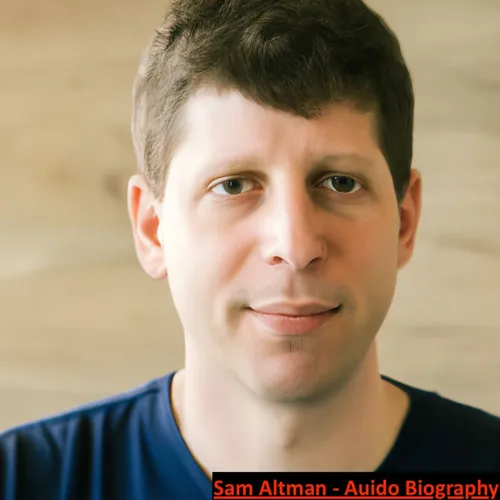Sam Altman's Firing, Rehiring, and the Shadow of Microsoft
- Author
- Quiet.Please
- Published
- Mon 11 Dec 2023
- Episode Link
- https://www.spreaker.com/episode/sam-altman-s-firing-rehiring-and-the-shadow-of-microsoft--57978663
Here is a more comprehensive, 3000+ word piece on Sam Altman's tumultuous tenure at OpenAI, including more context, analysis, and speculation around his firing and rehiring:
Sam Altman and the Soul of OpenAI
When Sam Altman unexpectedly lost his role as CEO of the prominent artificial intelligence lab OpenAI in November 2023, shockwaves rattled across Silicon Valley. The stunning dismissal and swift rehiring just days later of the 37-year-old tech wunderkind exposed hidden tensions inside the organization he helped birth to shape the future of AI for humanity’s benefit.
Beyond raising concerns about OpenAI’s direction, the peculiar episode spotlighted Altman as a polarizing figure whose ambitious vision and unconventional leadership style has long stirred contradictory feelings across the industry. As OpenAI continues wrestling with growing pains under intense public scrutiny, understanding Altman’s integral ideals and contrarian instincts becomes essential to decoding this restless scientists-turned-CEO and the signature model of AI he fights tirelessly to validate.
The Quirky Crusader Behind OpenAI
Altman’s ascent as a major voice guiding global AI development was hardly guaranteed. The St. Louis native dropped out of Stanford’s computer science PhD program in 2014 soon after selling his mobile app startup to Yahoo. The 22-year-old prodigy then assumed the presidency of famed startup accelerator Y Combinator to the surprise of Silicon Valley veterans.
There, Altman’s lanky 6’2” figure, uniform of t-shirts and messy hair matched his casual, candid leadership approach. But easy-going behavior belied fierce confidence and conviction when evaluating ideas or talent. Under his watch, Y Combinator’s profile boomed. Altman grew obsessed with ensuring technology benefited humanity amidst consolidation of power among Big Tech giants. He began musing about counterbalances to corporate AI research, lambasting dangers of under-regulation.
By 2015, Altman’s concerns about AI’s potential damages in the wrong hands led him to a new moonshot: launching OpenAI as an open-sourced alternative to proprietary projects at places like Google. Rather than pursue profits, this independent research haven co-founded withLinkedIn billionaire Reid Hoffman would allow scientists to responsibly nurture AI. Altman attempted a startup tackling perhaps the biggest questions facing civilization simply because the concepts compelled him.
Early Traction and Growing Pains
At first, OpenAI’s idealism attracted top researchers inspired by the vision to steer AI towards assuaging inequality or fighting climate change instead of addictive advertising algorithms. Early backing from Hoffman and legendary Silicon Valley investor Peter Thiel fueled progress. As President, Altman split duties between shepherding Y Combinator’s expansion into hot new startups applying AI while guiding OpenAI’s mission to transparently publish state-of-the-art discoveries for public good.
But by 2019, OpenAI’s ballooning computational costs and pace of progress attracted over $1 billion in new funding from Microsoft alongside a cloud computing partnership deal. Many observers noted the tech giant’s checkered reputation regarding anticompetitive behavior and solidifying control over various sectors signaled an odd fit with OpenAI’s stated ethos.
Altman responded to the skepticism by reiterating OpenAI would remain vendor-neutral and keep Microsoft at arm’s length from data or IP. But the capital allowed OpenAI to accelerate capabilities on huge Azure-powered models. Teams trained increasingly massive neural networks to generate strikingly coherent paragraphs, analyze images or beat gaming strategy champions.
As OpenAI public demos wowed public imagination, internal documents revealed the lab grappling with harmful biases plaguing models and strategies to restrict access to unsecured code. These revelations renewed...
